10 Vintage Art Deco Mirrors With Iconic Geometric Designs
Clean lines, chrome accents, and bold shapes make art deco mirrors easy to spot. You can expect symmetry, stepped edges, and neat bevels that feel crisp. Then look for sunbursts, chevrons, and fan details that add character. For quick styling tips, match the frame finish to nearby hardware.
This post may contain affiliate links, which helps keep this content free. Please read our disclosure for more info.
Art Deco French Sunburst Mirror with Gilded Rays
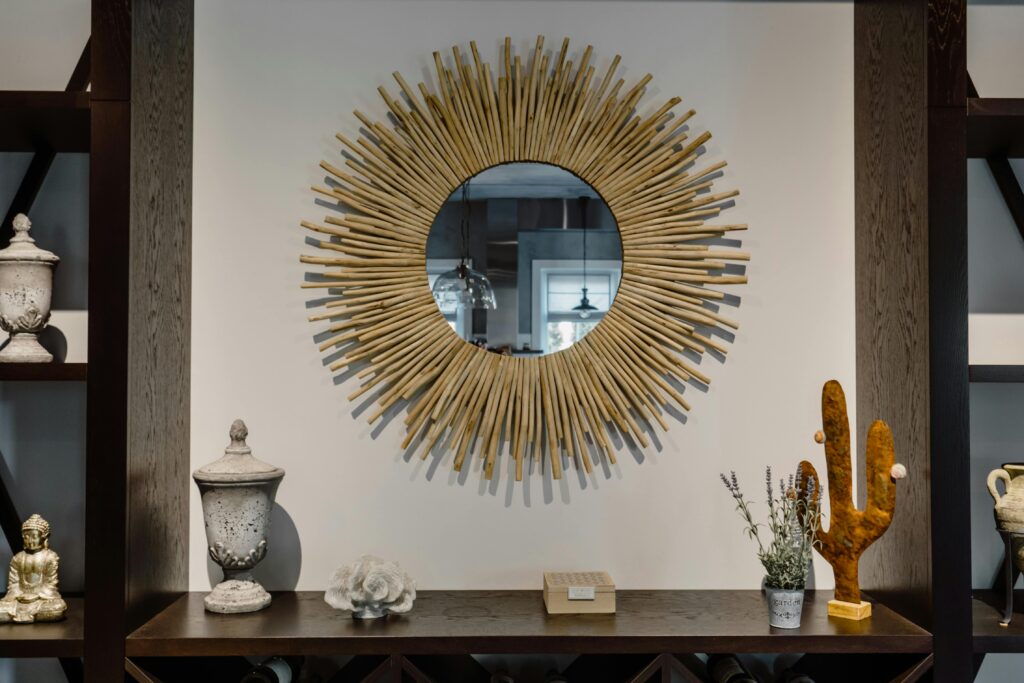
From the late 1920s to early 1930s, French makers turned out radiant sunburst forms in wood and gesso. Many examples use hand applied gold leaf that has mellowed to a warm tone. Typical diameters range from 20 inches to 36 inches, so they work over mantels and consoles. Backboards are often wood with a hanging ring set high. Estimated value today is around $1,200 to $2,400 for clean, original finish.
Collectors often look for even ray spacing and tight joints on each spoke. Minor edge wear is common and can add charm if the glass remains clear. A gentle dusting and non ammonia glass cleaner keep it looking fresh. Provenance from a Paris shop or hotel can push interest higher. Expect the best prices for pieces with original backing paper and intact gilding.
Art Deco Octagonal Beveled Mirror with Nickel Frame
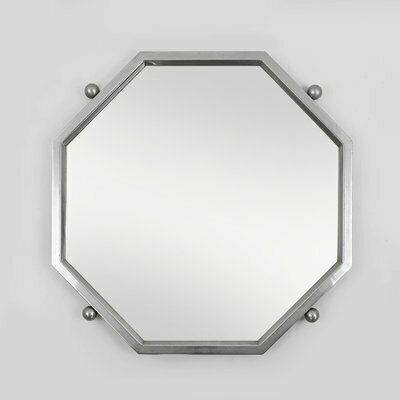
Dating to the early 1930s, this shape shows classic geometry with eight equal sides. Frames are usually nickel plated brass that has a cool silver tone. Bevel edges catch light and give depth without extra ornament. Most hang from a chain or two fixed brackets at the top. Current market value often sits between $600 and $1,100 depending on size and condition.
Buyers tend to check corners for tight seams and crisp angles. Clouding on old silvering appears at the edges and is acceptable if even. Replacement chains should be sturdy and scaled to the weight. A dry microfiber cloth works well for routine care. Expect premium results for large sizes above 28 inches across.
Art Deco Chevron Etched Panel Mirror
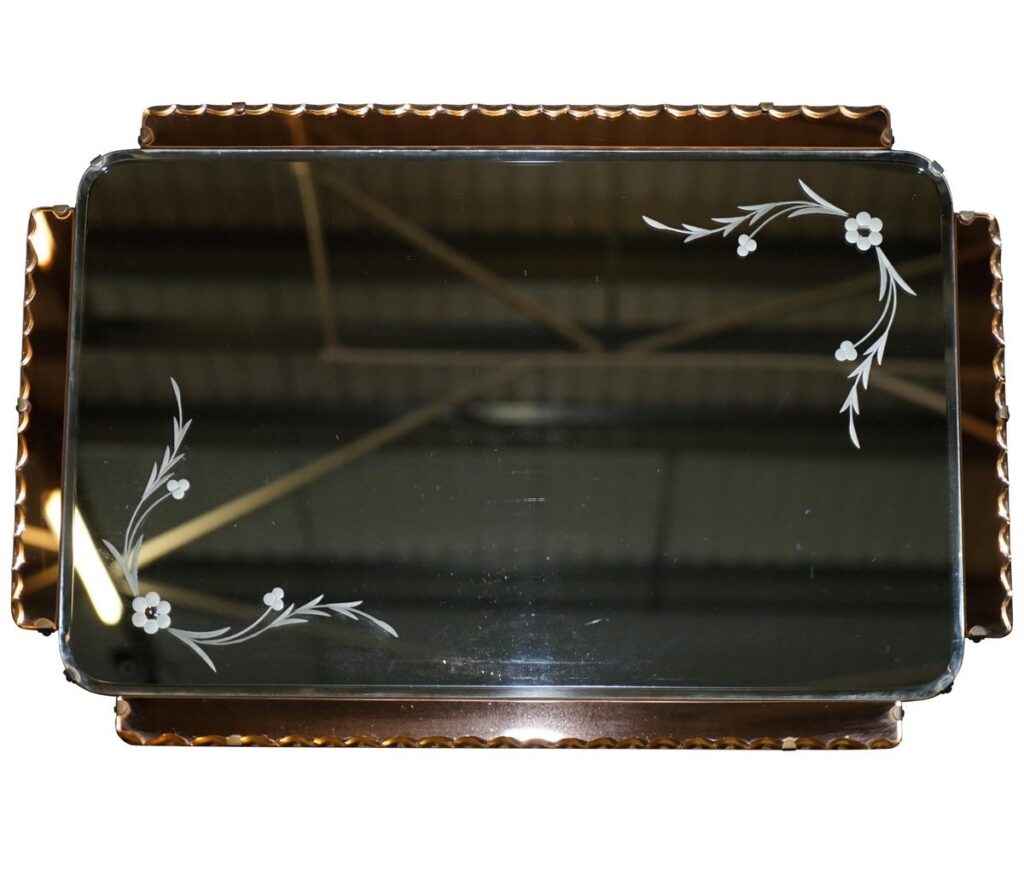
Made through the 1930s, etched chevrons bring a tidy rhythm around a clear center. Panels can be individual tiles set on a wooden board or a single etched plate. Nickel clips or small chrome tabs commonly hold each tile in place. Many were sold for hallways and dressing areas in city apartments. Values typically range from $450 to $900.
Shoppers like even etching lines and glass with minimal scratches. Any missing tab can be replaced with period style hardware for a better match. Light haze on the back silver shows age and often looks fine on the wall. A pair stacked vertically can stretch a narrow space. Expect near the top of the range for complete sets with original hardware.
Art Deco Fan Motif Vanity Triptych Mirror
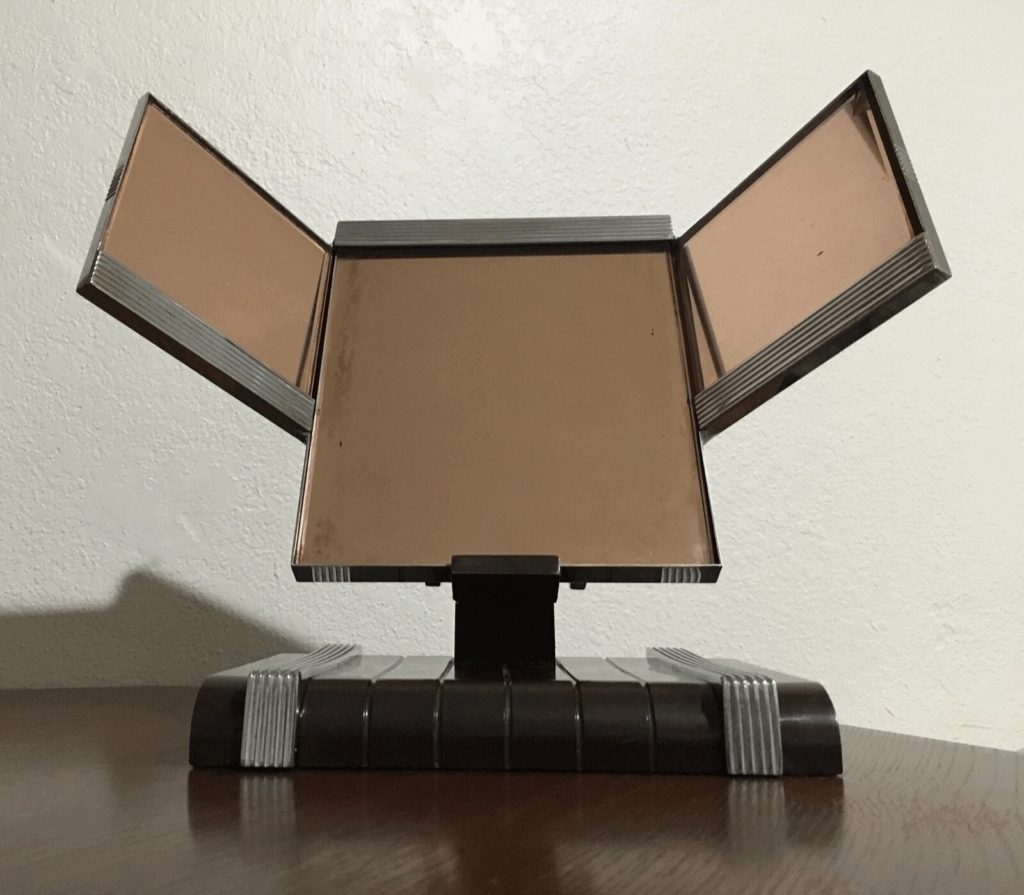
From mid 1920s salons came folding vanity mirrors with fan shaped tops. Hinged wings let users adjust angles for makeup and jewelry. Frames are often chromed brass with subtle step details. Silvering sometimes shows light freckles that read as period charm. Price estimates run about $500 to $1,200 based on size and clarity.
Collectors enjoy the way the wings create a room glow when open. Original hinges should move smoothly with no wobble or binding. Felt pads on the base protect wood tops and prevent slips. A small desk lamp beside the center panel gives a gentle sparkle. Expect higher bids for units with original tabletop stands and clean bevels.
Art Deco Stepped Chrome Frame Wall Mirror
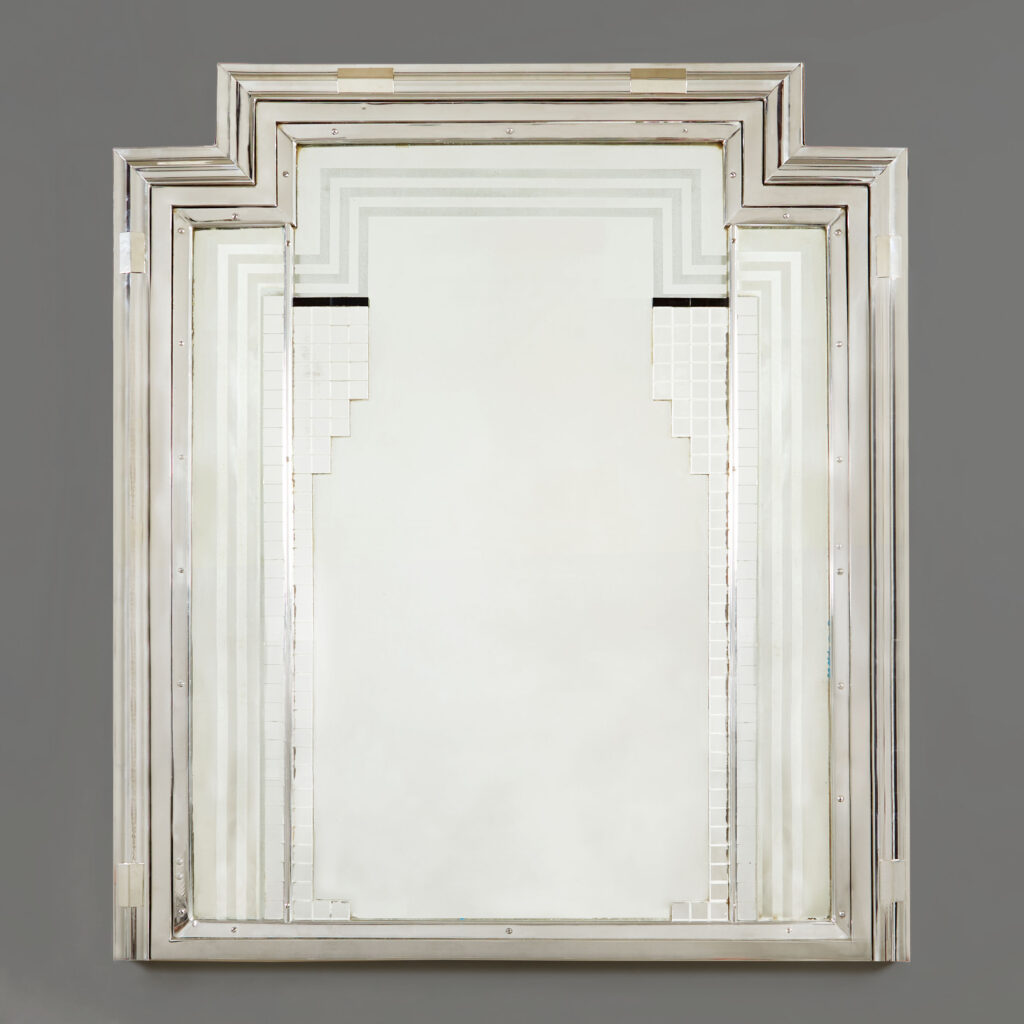
In the early 1930s, stepped rectangles echoed city skylines with crisp layers. Frames use steel or brass with a bright chrome finish. Depth changes across the tiers give a shadow effect around the glass. Common sizes sit between 24 inches and 36 inches wide. A fair estimate today is $550 to $1,000.
Inspection should focus on plating wear at corners and along edges. Touch marks on the glass near the frame are typical and rarely distracting. A dry polish cloth helps maintain shine without scratching. Secure wall anchors are a must due to the weight of the frame. Expect top interest for pieces with factory labels on the backboard.
Art Deco Round Mirror with Mirrored Tile Border
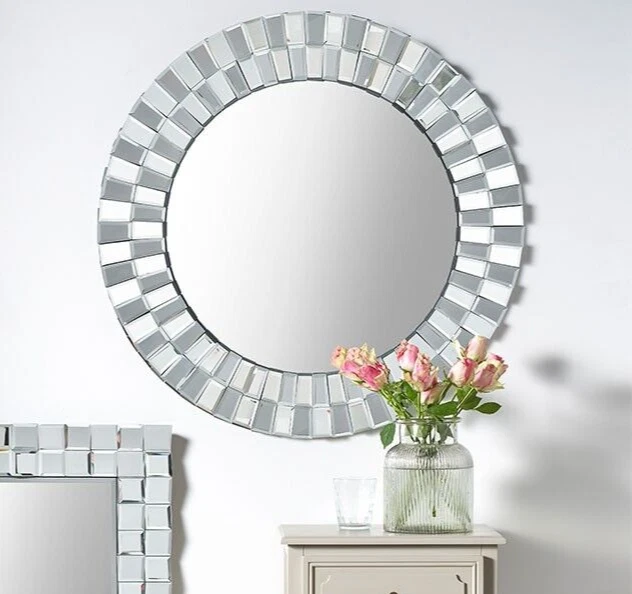
Produced in the 1930s, round centers framed by small mirrored tiles give a neat halo. Each tile is beveled, so the ring sparkles under room light. Backing boards are wood with a wire or triangle hangers. Many came from British department stores and have small maker tags. Values usually fall between $400 and $850.
Collectors look for full rings with no missing segments. A gentle check for loose tiles is wise before hanging. Light silver bloom at the outer edge is common and can look authentic. Cleaning should avoid soaking the seams so the adhesive stays sound. Expect a higher price for near mint rings with bright, even bevels.
Art Deco Shield Shaped Beveled Mirror
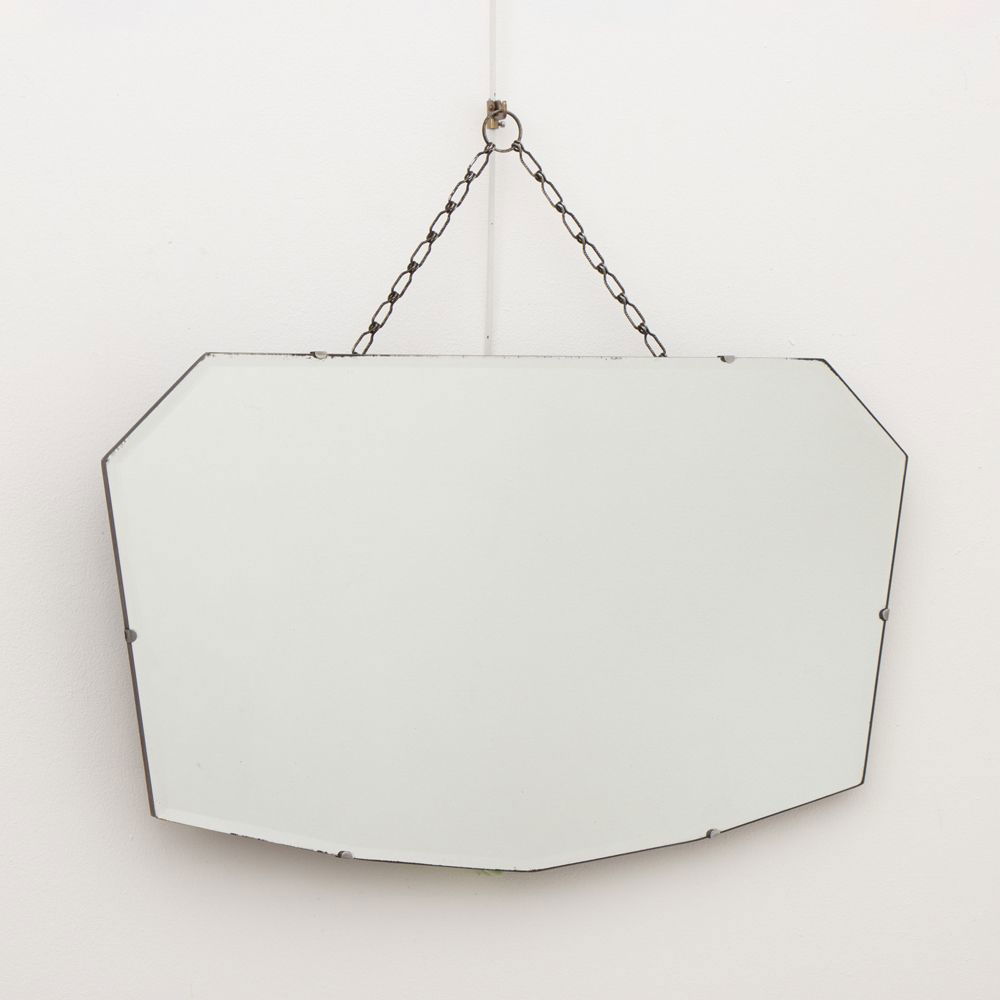
Across the late 1920s, shield shapes brought a soft take on geometry. The outline narrows toward the bottom and flares at the shoulders. Most examples hang from a short chain and sit well over a small fireplace. Bevels can be broad, which adds an elegant glow. Market value often ranges from $350 to $700.
Buyers prefer smooth curves with no chips at the pointed base. Original chain and backboard stickers help confirm age. A neutral wall color lets the outline stand out cleanly. Placing it opposite a window can add daylight into a darker room. Expect higher interest when the glass is free of scratches in the central area.
Art Deco Geometric Overmantel Mirror with Stepped Corners
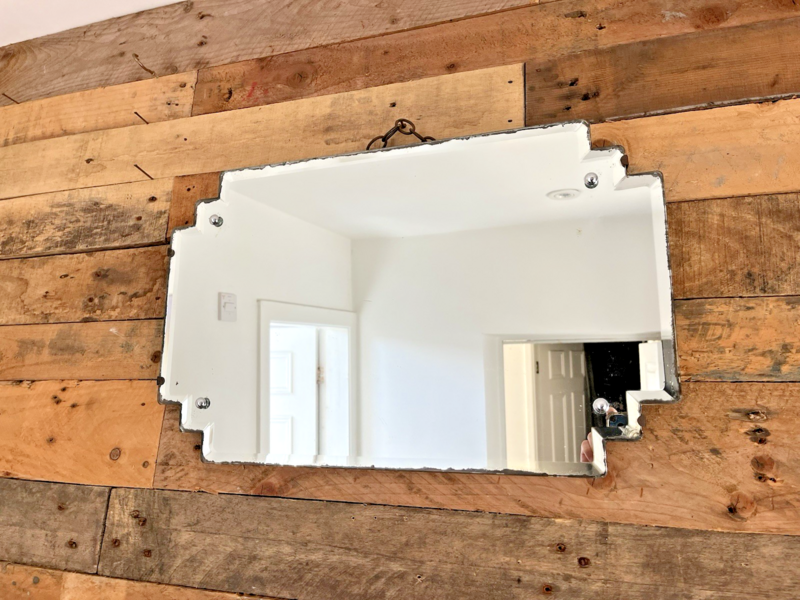
In the early 1930s, overmantel formats gained stepped shoulders that echo skyscraper lines. The long rectangle fills a fireplace wall nicely. Frames are thin, letting the glass take center stage. Some examples include frosted bands near the top for a subtle accent. Values generally range from $500 to $1,100.
Collectors notice tight miter joints at each stepped corner. A level mounting keeps the lines looking crisp. Light foxing at the edges can add a gentle vintage look. Use anchored screws and a center cleat for security. Expect top dollar for wide formats above 40 inches with clean silvering.
Art Deco Rectangular Mirror with Skyscraper Top
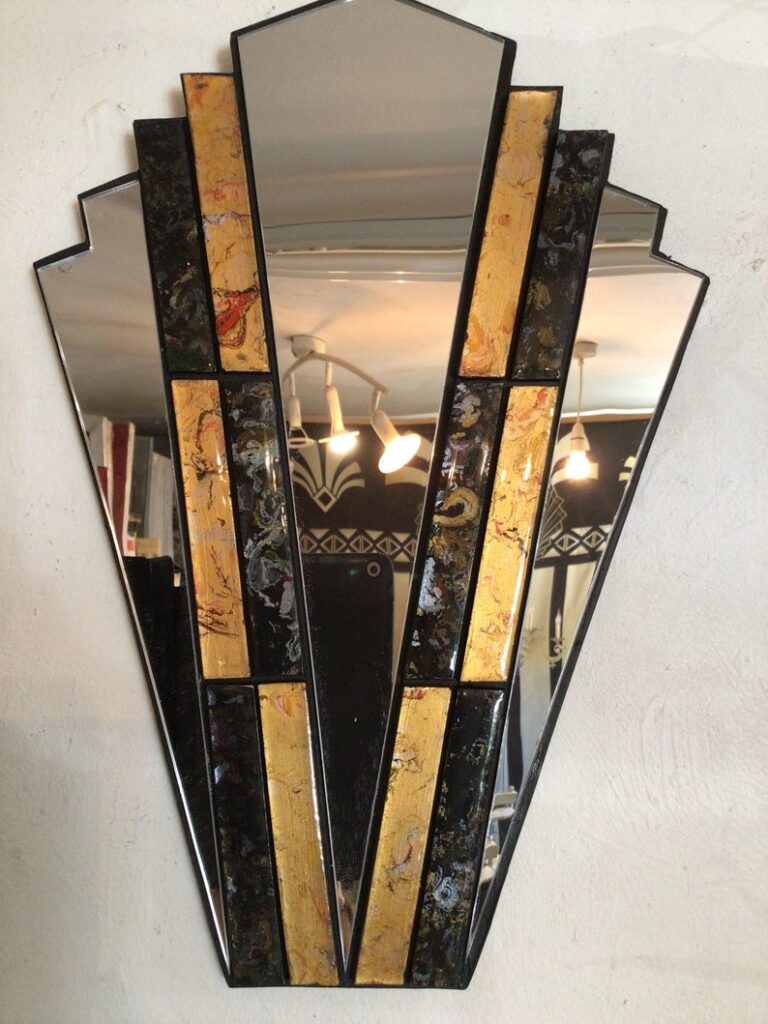
From the late 1920s onward, tall rectangles with tiered crowns appeared in apartments and offices. The crown steps up in small levels that frame the upper glass. Many have narrow bevels that outline the main plate. The form suits living rooms and hallways with high ceilings. Values usually sit around $450 to $900.
Buyers will check the crown for tight layers and no gaps. Even silvering along the top edge helps the shape read clean. A centered hanger keeps the tiers aligned with the wall lines. Gentle glass cleaner and a soft cloth are all you need for care. Expect premium interest for tall examples above 36 inches.
Art Deco Square Mirror with Cubist Inset Panels
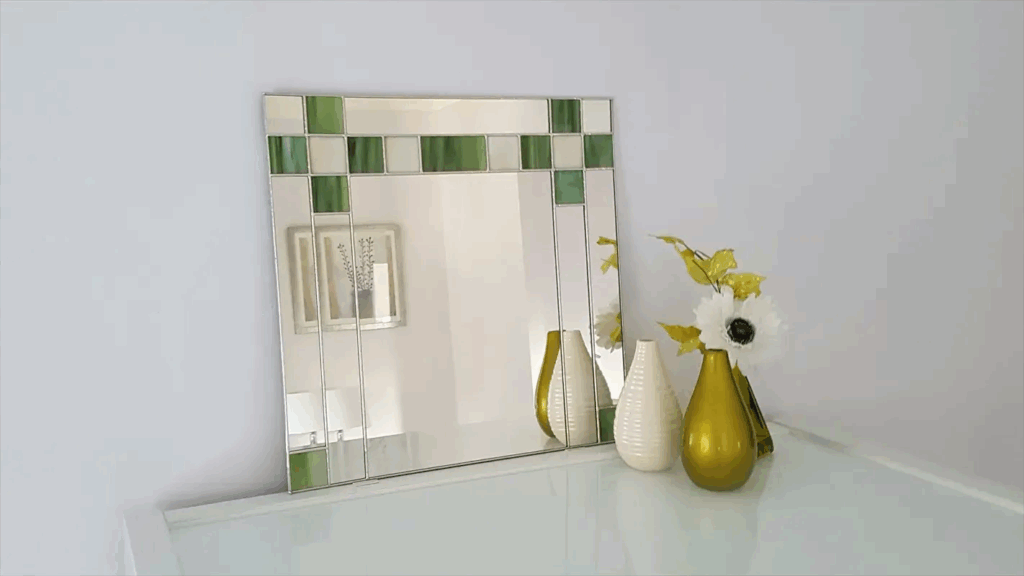
By mid 1930s, squares with small inset tiles delivered a tidy grid effect. Each corner may carry a tiny mirrored square that adds rhythm. The main plate is usually thick with a shallow bevel. Many pieces came from British makers and carry paper labels. Market prices often range from $500 to $1,000.
Buyers check that insets match in size and sit flush with the surface. Any loose tile should be secured with period appropriate hardware. The square format works well over low chests and entry benches. Neutral paint and simple frames let the geometry speak. Expect higher interest for complete grids with no missing tiles.
This article originally appeared on Avocadu.
